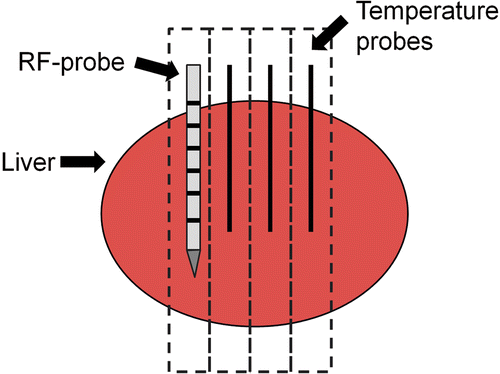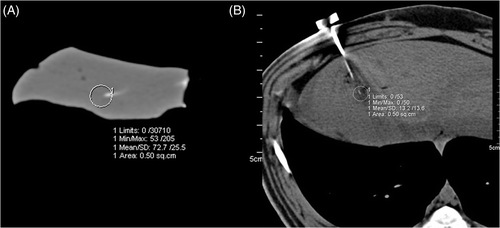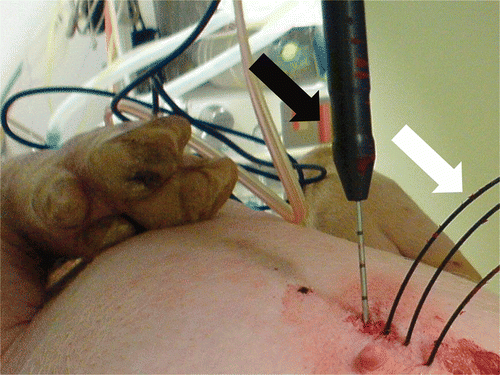Figures & data
Figure 1. Schematic drawing of the experimental setup used for the ex vivo study. The scattered lines represent the axial CT images that were reconstructed. Distances between RF applicator and temperature probes were 5, 10 and 15 mm, respectively.

Figure 2. Examples for ex vivo (A) and in vivo (B) measurements of local temperature around the tip of a temperature probe during Radiofrequency ablation. Note the beam hardening artefacts in (B) caused by the RF-applicator.

Figure 3. Experimental setup used for the in vivo experiments with the animal lying in supine position. RF applicator (black arrow) and three temperature probes (white arrow) are inserted parallel.

Table I. Results of the ex vivo study. Temperature data and measured CT-numbers derived from the 10 experiments were pooled for each temperature probe position.
Table II. Results of the in vivo study (pig 1).
Table III. Results of the in vivo study (pig 2).
Table IV. Results of the in vivo study (pig 3).
Table V. Results of the in vivo study (pig 4).

